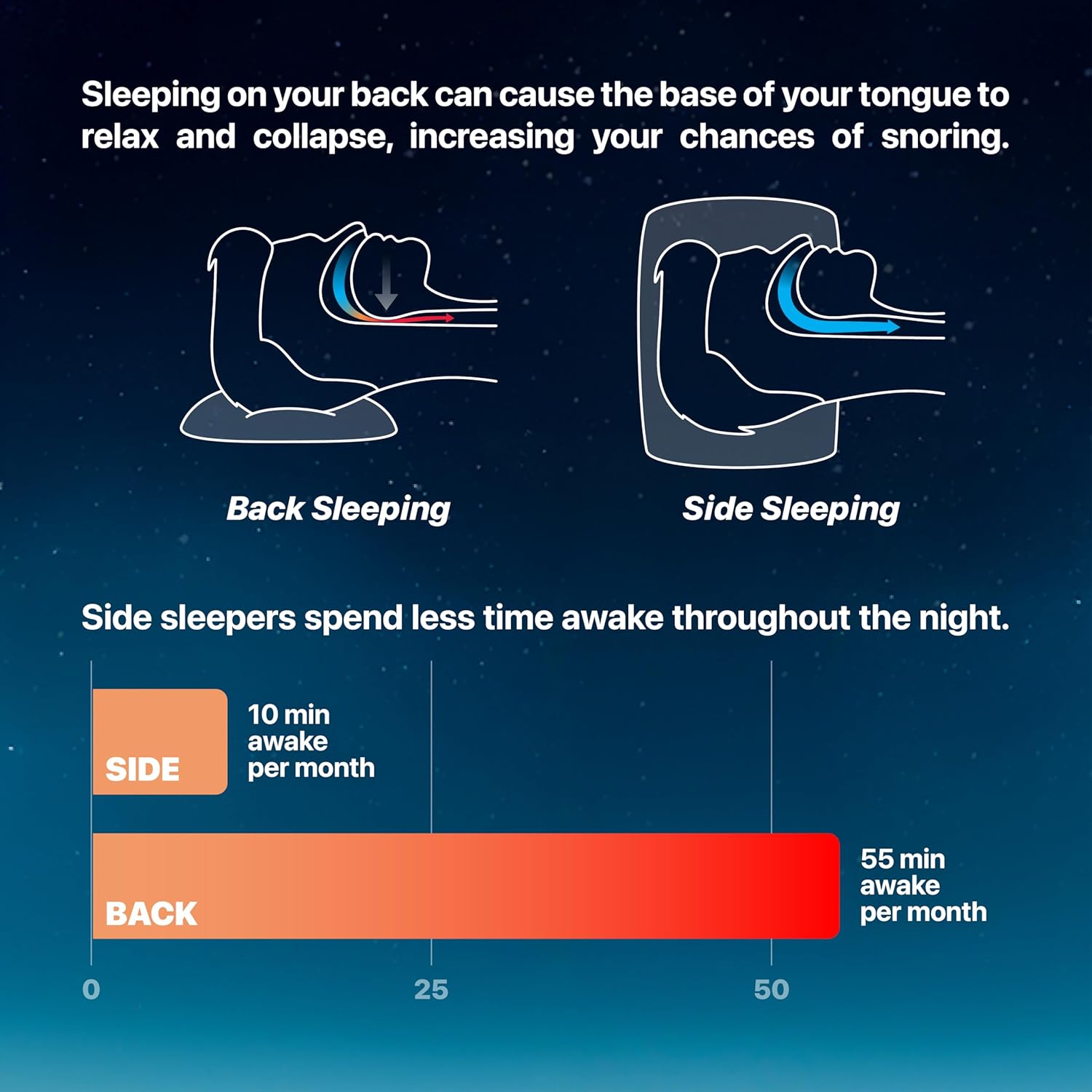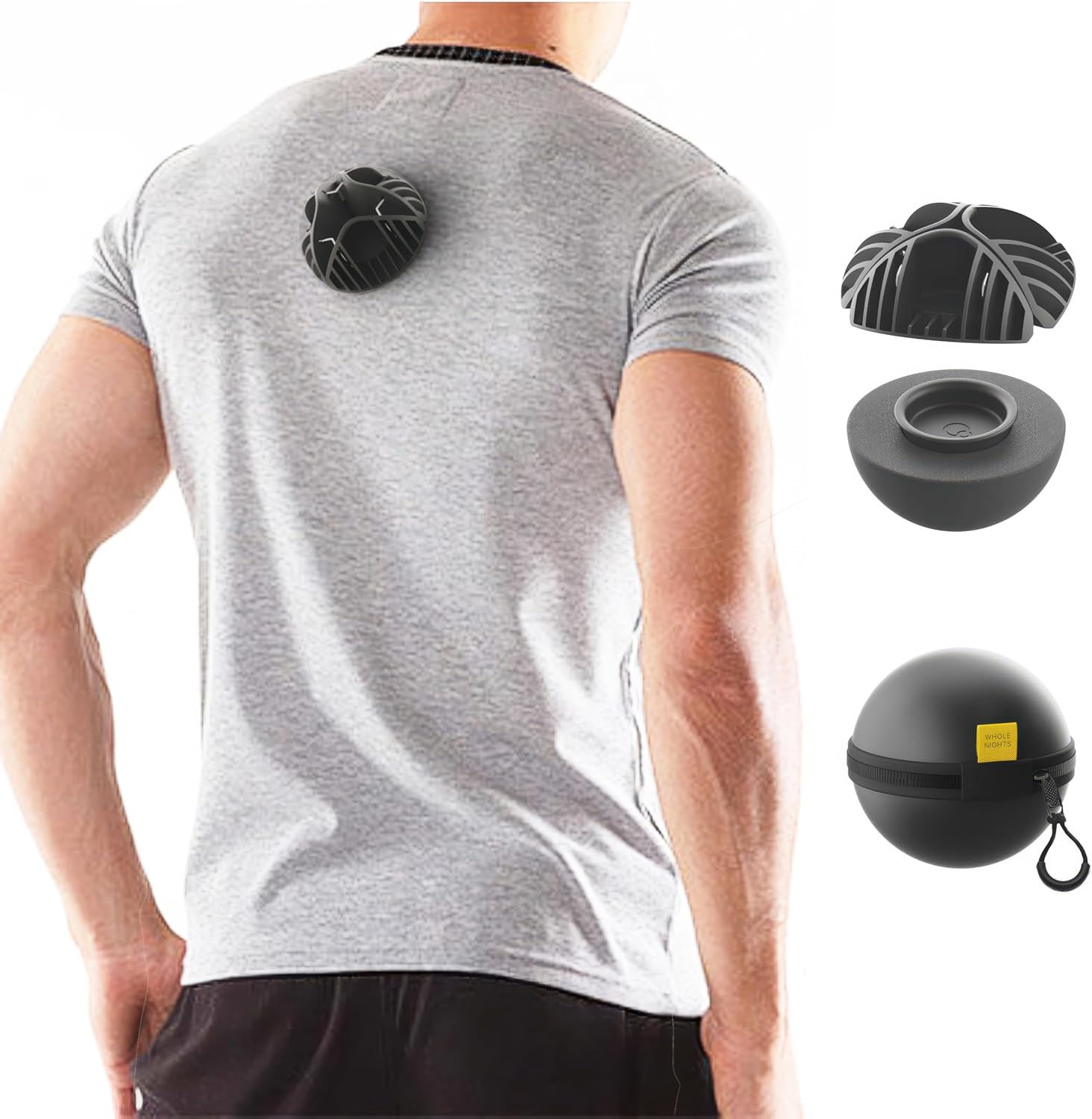




Price: $25.95
(as of Apr 06, 2025 23:47:11 UTC - Details)
What's the Best Way to Sleep with Lower Back Pain?
Introduction
Waking up with lower back pain can be a frustrating experience that affects your entire day. If you've been searching for the best way to sleep with lower back pain, you're not alone. Many people grapple with this issue, and finding the right sleeping position and supportive products can make a world of difference. In this article, we’ll explore various strategies to improve your sleep quality while managing lower back pain. We’ll cover everything from ideal sleeping positions to supportive mattresses and pillows. Let’s dive in!
Understanding Lower Back Pain
What Causes Lower Back Pain?
Before we discuss sleeping solutions, it’s essential to understand what might be causing your lower back pain. Common culprits include muscle strain, herniated discs, and even poor posture during the day. By addressing these underlying issues, you can create a more conducive environment for restful sleep.
How Sleep Affects Lower Back Pain
The way you sleep can significantly impact your lower back pain. Certain positions can either alleviate or exacerbate discomfort. Knowing this can help you make better choices when it comes to your sleep habits.
Best Sleeping Positions for Lower Back Pain
Side Sleeping with a Pillow Between Your Knees
One of the best ways to sleep with lower back pain is to adopt a side-sleeping position. Placing a pillow between your knees can help keep your spine aligned and reduce pressure on your lower back. This position allows your hips to remain aligned, which can alleviate discomfort throughout the night.
Back Sleeping with a Knee Pillow
If you prefer sleeping on your back, consider placing a small pillow under your knees. This simple adjustment can help maintain the natural curve of your spine, providing relief from lower back pain. Additionally, this position can help reduce pressure on your lower back while you sleep.
Avoiding Stomach Sleeping
While some might find stomach sleeping comfortable, it can lead to increased strain on your back. If you can, try to avoid this position, as it can exacerbate lower back pain. Instead, focus on transitioning to side or back sleeping for better support.
Choosing the Right Mattress
Importance of a Supportive Mattress
The mattress you sleep on plays a crucial role in managing lower back pain. A supportive mattress can provide the necessary support for your spine while also offering comfort. Consider investing in a medium-firm mattress, as it tends to strike the right balance between support and comfort for most individuals.
Memory Foam vs. Innerspring Mattresses
When it comes to mattresses, you may find yourself choosing between memory foam and innerspring options. Memory foam mattresses conform to your body, providing excellent support and pressure relief. On the other hand, innerspring mattresses offer more bounce and can be firmer. Consider your personal preference and body type when making this decision.
Selecting the Right Pillow
Importance of a Good Pillow
Just like your mattress, your pillow choice can greatly affect your sleep quality and lower back pain. A good pillow supports your neck and keeps your spine aligned. Depending on your sleeping position, you may require a different type of pillow.
Pillow Options Based on Sleeping Position
- Side Sleepers: Opt for a thicker, firmer pillow to fill the space between your head and shoulders.
- Back Sleepers: A medium loft pillow that supports the natural curve of your neck is ideal.
- Stomach Sleepers: Consider a thin, soft pillow or even no pillow at all to keep your neck aligned.
Additional Sleep Aids
The Role of Mattress Toppers
If you find your mattress too firm or uncomfortable, a mattress topper can add an extra layer of comfort. Look for options made of memory foam or latex, which can provide pressure relief and support.
Heating Pads and Cold Therapy
Using a heating pad before bed can relax your muscles and ease pain. Alternatively, cold therapy can reduce inflammation. Experiment with both to see which method provides the most relief for your lower back pain.
Creating a Sleep-Friendly Environment
Keeping Your Bedroom Comfortable
A comfortable sleep environment is crucial when managing lower back pain. Ensure your bedroom is cool, dark, and quiet to promote better sleep. Consider using blackout curtains and white noise machines if external factors disrupt your sleep.
Establishing a Bedtime Routine
Having a consistent bedtime routine can signal to your body that it’s time to wind down. Engage in relaxing activities like reading or gentle stretching before bed to help prepare your body for sleep.
Conclusion
Finding the best way to sleep with lower back pain doesn't have to be an uphill battle. By adopting supportive sleeping positions, choosing the right mattress and pillow, and creating a sleep-friendly environment, you can improve your sleep quality and reduce discomfort. Remember, it’s essential to listen to your body and make adjustments as needed. With these tips, you can wake up feeling refreshed and ready to take on the day!
To stay in the side sleep position, just clip it on the upper back of your shirt. The plastic Clip goes on the outside and the foam part on the inside of your shirt. Snug fit preferred.
Snore therapy experts recommend sleeping on your side to prevent sleep and reduce snoring
In the beginning, the ball may sometimes fall off during sleep. Just keep clipping it on every evening until you develop a natural side sleeping habit
30-day money back guarantee. Shirt is not included.
Only for Backsnorers. If you snore on stomach or side, changing position will not help with snoring.
